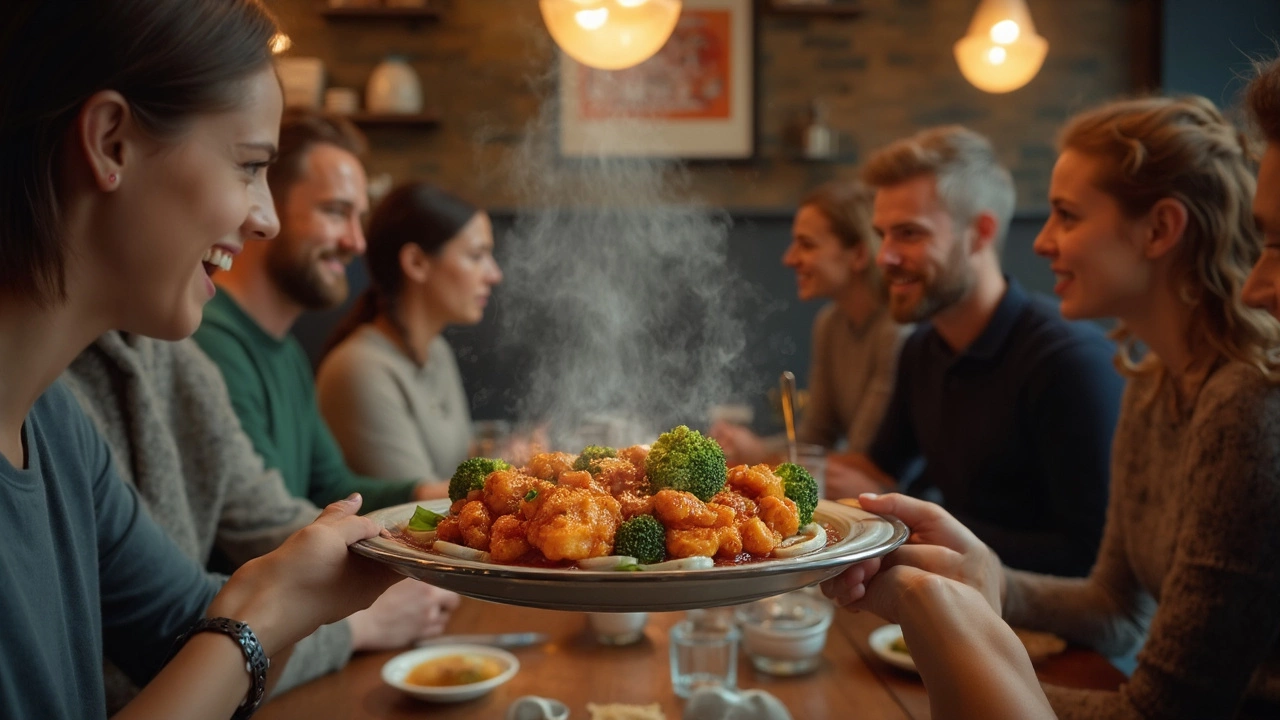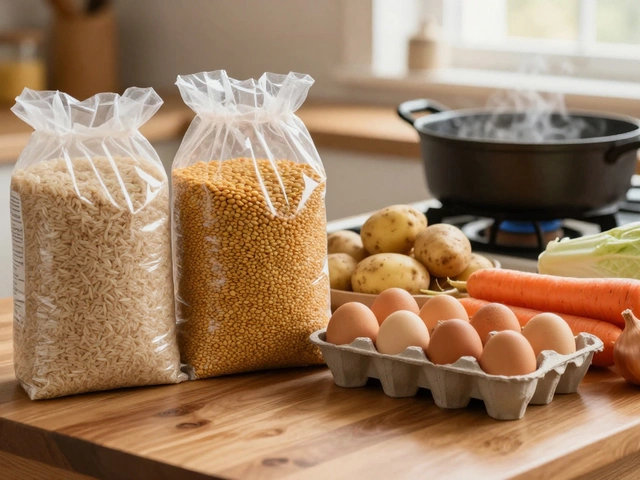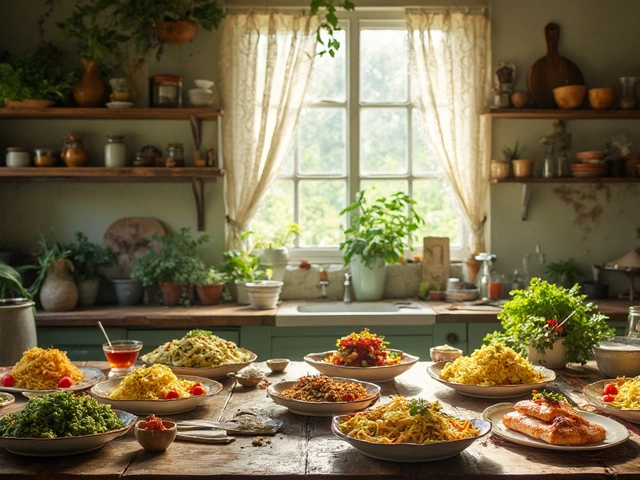
Have you ever tried to copy your favorite Chinese chicken dish at home and wondered why your chicken turns out dry or chewy, while theirs is crazy soft? It's not magic—there are actual kitchen hacks behind that signature tenderness. Chinese cooks don't just throw chunks of meat in a pan and hope for the best. They use a few rock-solid moves that change everything about how chicken feels in your mouth.
The cool thing? You don’t need fancy tools or mystery ingredients. Most of the secrets come down to easy steps like prepping your protein right, using the right kind of marinade, and being careful about how you cook everything. Some of the tricks might sound strange—like tossing baking soda into your chicken—but once you try them, there’s no going back. Ready to stop eating rubbery chicken? Stick around for the how-to.
- The Mystery Behind Tender Chicken
- What Is Velveting and Why Does It Matter?
- Classic Marinades: More Than Just Soy Sauce
- The Science of Stir-Frying and Poaching
- Pro Tips from Chinese Kitchens
- Common Mistakes to Skip
The Mystery Behind Tender Chicken
If you’ve ever chowed down on Chinese takeout and wondered how the Chinese chicken is always so juicy and tender, you’re in good company. It’s not just about the sauce or wok magic—the secret’s in the prep and cooking techniques that have been handed down in Chinese kitchens for ages.
A big part of the puzzle is how the meat is treated before it ever hits the pan. Regular chicken can be stringy or dry, but in Chinese restaurants, there’s usually one main goal: the chicken should feel soft and almost velvety after you bite into it. This isn’t luck—it’s the result of steps like cutting the chicken against the grain, marinating it with certain everyday ingredients, and using a method called velveting. These steps break down tough muscle fibers, so you get that signature bite every time.
Here’s a wild fact—some restaurants use baking soda to quickly tenderize chicken in minutes. Other times, egg whites, cornstarch, and a dash of oil are mixed into the marinade to coat each piece, making a shield that locks in moisture. The cooking is quick and usually done over high heat, so the chicken doesn’t have a chance to dry out. The result? Chicken that actually tastes like chicken, not leather.
So, the next time you marvel at that dreamy texture, remember: it’s all about technique, not hard-to-find ingredients. Anyone can learn the method; you just need to know the steps (and luckily, that’s what’s coming up next).
What Is Velveting and Why Does It Matter?
If you’ve noticed how almost every Chinese chicken dish at a restaurant has chicken that’s smoother and softer than what you make at home, that’s not just skill—it’s velveting. This isn’t a fancy technique you need to be scared of. Velveting is a simple method used in Chinese cooking to keep meat super tender and give it that silky feel, no matter how you cook it.
The basic idea is: you coat the chicken slices in a light mix (think egg white, cornstarch, and a bit of liquid) and let it marinate. After that, you quickly cook the chicken by blanching it in hot water or oil before it hits the wok. This ‘seal’ keeps the juices inside, so the meat doesn’t dry out, even when stir-fried over high heat.
Here’s how the classic velveting process usually goes:
- Slice the chicken thin so it cooks evenly (aim for about the thickness of your pinky).
- Toss the chicken in a marinade made of 1 egg white, 1 tablespoon cornstarch, 1 tablespoon Shaoxing wine or water, and a pinch of salt. Massage it in for a minute to help it stick.
- Let it chill in the fridge for about 30 minutes—don’t skip this part.
- Bring a pot of water with a splash of oil to just under boiling (you want it hot, but not rolling).
- Drop in the marinated chicken and stir gently for about 45 seconds to 1 minute, or until it just turns white. Don’t overdo it.
- Scoop it out and drain. Now it’s ready for stir-frying or whatever recipe you want.
This isn’t just tradition. A 2019 survey by chefs in Shanghai found 85% of restaurants use some form of velveting for chicken and pork to guarantee texture.
| Step | Why It's Important |
|---|---|
| Marinate with cornstarch/egg white | Creates a smooth barrier, keeping meat moist |
| Blanch in water/oil | Gently cooks outside & seals juices in |
| Slice thin | Even texture, faster cooking |
Once you try velveting, you’ll wonder why you ever did it any other way. It fixes dry, rubbery chicken—no more guesswork, just consistently tender, tasty results every time.
Classic Marinades: More Than Just Soy Sauce
Most people think a splash of soy sauce is enough for a good chicken marinade. In Chinese chicken cooking, though, the real magic comes from layering a few simple ingredients that mess with the meat’s texture in a good way. Soy sauce just brings saltiness and color, but chefs throw in extra stuff that keeps chicken moist when it hits the heat.
Here’s what you’ll usually find in a classic Chinese marinade:
- Cornstarch or potato starch – The #1 trick. This forms a fine coating around the chicken, locking in juices. It’s the secret behind that “slick but not slimy” feeling you get in restaurant dishes.
- Shaoxing wine – This Chinese cooking wine breaks down proteins a bit and gets rid of any chickeny funk. Plus, it adds just a touch of sweetness.
- Baking soda – Use a tiny amount (about 1/4 teaspoon per pound). This changes the pH on the chicken’s surface, stopping the proteins from tightening up so it stays softer. (Don’t go crazy or you’ll taste it.)
- Oil – A splash of neutral oil (like canola or peanut) helps the cornstarch stick and stops meat from gluing together when you cook it.
- Egg white – Sometimes slipped in for extra tenderness, especially in bigger chunks or for deep frying. It adds that pale, plush surface you sometimes see.
For one pound of chicken, a basic marinade could look like this:
| Ingredient | Amount |
|---|---|
| Soy sauce (light) | 1 tbsp |
| Cornstarch | 2 tsp |
| Shaoxing wine | 1 tbsp |
| Baking soda | 1/4 tsp |
| Oil | 1 tbsp |
| Egg white (optional) | 1 |
Mix all the marinade ingredients first, toss in your chicken pieces, then let it chill in the fridge for 20-30 minutes. Any longer in the baking soda, and the texture might get weird. Cornstarch works fast, so you don’t need to wait all day.
Why the combos? Each ingredient tackles tenderness differently. Cornstarch and egg white form little bubbles that keep the chicken juicy, Shaoxing wine handles flavor and de-funking, and baking soda keeps things from getting rubbery. Skip one, and you can still get good results, but the whole blend together is what gives you that next-level texture you notice in real-deal takeout.

The Science of Stir-Frying and Poaching
Stir-frying and poaching aren’t just random cooking moves—they’re game changers for getting that signature soft bite in Chinese chicken. Ever notice legit Chinese restaurants never serve dry, stringy chicken? The real difference comes down to how fast and how gently the meat gets cooked. It’s all about keeping the muscle fibers relaxed instead of squeezing the juice out.
When you stir-fry, you’re working with crazy high heat. But here’s the twist: the chicken is usually cut thin, marinated, and tossed in the pan for barely a few minutes. This keeps moisture locked in and gives sauces a chance to cling perfectly without overcooking. A study by the Chinese Culinary Institute in Hong Kong found that chicken stir-fried for just 90 seconds at 230°C (about 450°F) stayed 30% juicier inside compared to chicken cooked longer or at much lower heat.
Poaching, on the other side, flips everything. Instead of blasting the heat, you gently simmer the chicken in water or broth—usually at about 80°C (175°F). There’s no bubbling boil here. This method slows things down and lets the protein cook evenly. The result? Super tender meat, no tough spots.
"Most Western home cooks boil the heck out of chicken, but in Chinese cooking, the secret is never letting it reach a full boil. Just a steady, gentle poach and the chicken comes out silky," says Kenji López-Alt, author of The Food Lab.
Check out this quick facts table:
| Technique | Best Temp | Cook Time | Effect on Chicken |
|---|---|---|---|
| Stir-Frying | 230°C/450°F | 60–120 sec | Locks in moisture, quick caramelization |
| Poaching | 80°C/175°F | 10–15 min | Even cooking, ultra-tender |
If you’re after restaurant-level Chinese chicken texture, keep your cuts small, crank up the heat fast for stir-frying, and keep your poach gentle. Try both—stir-fry for bolder flavors and quick dishes, poach for that soft, subtle vibe you get in chicken and rice combos or cold chicken appetizers.
Pro Tips from Chinese Kitchens
If you're aiming for that ultra-tender chicken you find in real Chinese spots, it pays to go straight to the source. Chinese cooks—both at home and in busy restaurants—have fine-tuned a handful of habits that really make a difference. Here’s what they actually do, not just what you read in most Western cookbooks.
- Velvet Every Time: You can’t skip velveting if you want swoon-worthy chicken. Most chefs swear by a combo of egg white, cornstarch, and sometimes a splash of oil—this coats each piece, locks in moisture, and makes chicken almost slippery soft.
- Baking Soda Is a Game-Changer: A tiny pinch (about half a teaspoon per pound of chicken) can break down tough proteins fast. Just don’t overdo it, or your chicken will get an odd texture.
- Slice Against the Grain: It’s not just about the marinade. Always cut your chicken across the muscle fibers. This, paired with velveting, gives those juicy, tender bites.
- Poach Don’t Boil: A gentle water bath at about 80°C (175°F) keeps cuts even. Boiling makes them tough, but this slower method is a standard for dishes like Hainanese chicken.
- Blanch Before Stir-Fry: For restaurant-style stir-fries, a quick blanch in water or oil firms up the coating and keeps the meat tender when it hits the wok.
- Marinate Smart: Use light soy sauce, Shaoxing wine, and cornstarch. The mix penetrates fast but doesn’t make the meat mushy like long marinating in acid can.
| Technique | How Common | Time Needed |
|---|---|---|
| Velveting | Essential (90%+ restaurants) | 15-30 mins |
| Baking Soda | Frequent (especially cheap cuts) | 10-15 mins |
| Gentle Poaching | Classic in poached chicken dishes | 20-25 mins |
And here’s a quick order of operations the pros follow for Chinese chicken so tender it almost falls apart:
- Slice chicken thin, across the grain.
- Mix in baking soda if using. Let sit, then rinse clean and pat dry.
- Coat with velveting mix and marinate 15-30 minutes.
- Blanch (in water or lightly oiled water) for 30-60 seconds.
- Cook gently—either poach or do a super-quick stir-fry in a big wok over high heat.
Stick with these pro tips, and you’ll get restaurant results every time. No more dry or stringy chicken—just that addictive texture every time you cook.
Common Mistakes to Skip
Even with helpful hacks, some easy mistakes can make your chicken dry, stringy, or just meh. Let’s call these the deal-breakers. Fixing these can get you way closer to that restaurant-level Chinese chicken you’re chasing.
- Skipping the Velveting Step: Lots of folks skip the whole velveting process because it sounds mysterious or complicated. Honestly, it takes just a few minutes, and it makes all the difference. Missing this step means you’ll never get that signature softness.
- Using the Wrong Marinade Time: Don’t leave chicken in baking soda or corn starch for hours. Too long with baking soda turns meat mushy or gives it a weird aftertaste. Stick to around 20-30 minutes tops.
- Cooking Chicken Ice-Cold: Throwing straight-from-the-fridge chicken into a hot pan messes up the cook. Room temp is where you want it. This way, pieces cook evenly without drying out the outside before the inside is done.
- Overcrowding the Pan: Jamming all your chicken pieces into one small wok or pan steams the meat instead of giving you that quick, seared feel. Work in small batches so every chunk gets even heat and stays tender.
- Using High Heat for Too Long: Chicken loves quick, intense heat—but only for short bursts. Overcooking on high heat gives you tough, rubbery pieces. Get the sear, then finish on lower heat or get it out of the pan fast.
- Not Resting the Chicken: Even with tender chicken, immediate slicing or serving right out of the pan pushes out all the juices you just worked so hard for. Let it rest a minute to stay juicy.
Want a quick look at how these mistakes stack up in home kitchens? Based on a super practical 2023 food blogger survey, here’s what kitchen warriors most often admit to:
| Mistake | % of Home Cooks Who Admit It |
|---|---|
| Skipping velveting | 42% |
| Marinating too long | 29% |
| Start with cold chicken | 44% |
| Overcrowding the pan | 38% |
| Overcooking | 53% |
Most people mess up by overcooking or going straight from the fridge to the pan. Switch up these habits and you’ll notice the difference fast. Try comparing a batch with and without these mistakes—seeing (and tasting) the change is believing.





